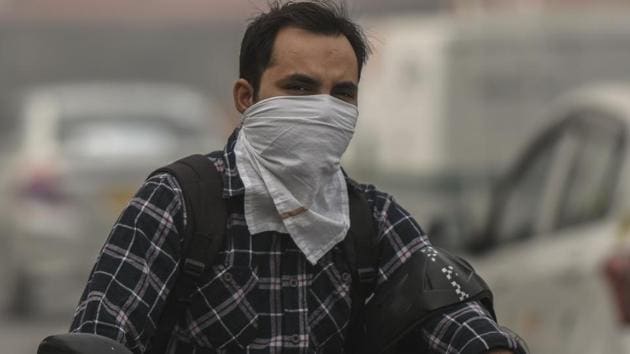Stubble burning can’t be a shield for inaction on Delhi’s air pollution
Neither the Delhi government nor the central government has the political will to address the issue. They depend on the generosity of our monsoons, winds and overall climate to mitigate air pollution. If anything, their respective policies on urbanisation have only made the situation worse
The season’s first cases of stubble burning — regarded by experts as one of the principal reasons behind the alarming spike in air pollution levels in the National Capital Region every winter — have been reported from Punjab and Haryana. In the 2017 winter, Haryana detected around 12,657 stubble-burning cases, and Punjab recorded 43,814 cases. “Chief ministers of the three states have been squabbling for the last two years over the impact of stubble burning on pollution levels in the Capital. Delhi chief minister Arvind Kejriwal has insisted that it is one of the biggest reasons why the city becomes a ‘gas chamber’ in the winter,” says a report in Hindustan Times .

Environmentalists, however, say, that by blaming stubble burning, both the central and state governments are shifting focus from other factors --- some of them much bigger than stubble burning --- which are responsible for air pollution.
In an interview with Hindustan Times, Vimlendu Jha, an environmentalist, and the founder of Swechha, talks about other mega air pollution-related challenges that Delhi faces, and what the city’s authorities need to do to clean up the air.
KD: Over the past week, at least 61 cases of stubble burning have been detected in Haryana and Punjab. Should Delhi be worried?
VJ: No doubt it’s a cause of concern. Despite several strictures from courts, including the National Green Tribunal, farmers continue the practice. The state and central governments have not been able to either incentivise alternative practices or adequately enforce the court orders. Stubble burning is a big cause of air pollution in North India, but it primarily spikes the air quality index (air pollution). But it is not the sole reason for poor or severe ambient air quality.
KD: Are we avoiding other causes of pollution, and blaming farmers, knowing well that they have no other option?
VJ: Absolutely! It’s become a convenient excuse for respective governments to blame the visible and the vulnerable, the smoke coming out of the stubble burning. They conveniently ignore the fact that several studies have established, including many commissioned by their own dispensations that the real cause of air quality crisis in Delhi or in other states is due to dust, vehicular pollution, thermal power plants, open waste burning and other infrastructure and industrial activities.
Farmers have not been provided with any alternative or incentive, through technology, subsidy or policy intervention. Given the agrarian distress in the times of climate change, putting the responsibility of environmental stewardship and virtue on to the poorest of the poor is misgovernance and escapism. Government/s need to put their house in order first.
KD: Is it too expensive to end stubble burning? Why are the states not doing anything?
VJ: It’s not just expensive, it’s also inconvenient primarily because of the way our agrarian economy is distressed. In between the harvest and sowing of the next crop, most farmers don’t have enough time to be wise or virtuous and also have financial compulsions which make them opt for stubble burning rather than other practices. Although certain amount of resources, perhaps in crores, were allocated to address the issue. But despite that no concrete action has been seen at the state level.
KD: The National Clean Air Programme (NCAP) has still not been notified…
VJ: The NCAP was one ambitious and timely response to the growing public health concerns due to poor air quality in most of India. Despite several grandstanding by government authorities, the NCAP has not been notified and still remains in the draft stage. Even the draft plan has been watered down and no concrete timelines have been stated in the document. The document mentions reduction of pollution levels by 35%to 50% in three to five years but there is no direction in terms of how, when and who is going to work on these reductions. Some extremely low-hanging targets have also not been explored such as forest burning (one of the primary reasons of poor ambient air quality in Indo-Gangetic plain), thermal power plants and rampant use of diesel generators in urban hubs.
KD: Has the Delhi/central government doing enough to control air pollution? What needs to be done to ensure that the coming months are better than what we had last year?
VJ: Neither the Delhi government nor the central government has the political will to address the issue. They depend on the generosity of our monsoons, winds and overall climate to mitigate air pollution. If anything, their respective policies on urbanisation have only made the situation worse. The Delhi government granted permission to chop down over 17,000 trees in last four years, with no concrete evidence of any new tree being added to the city. Similarly the central government has chopped thousands of trees in an already ‘breathless’ Delhi so as to build more malls and commercial complexes.






